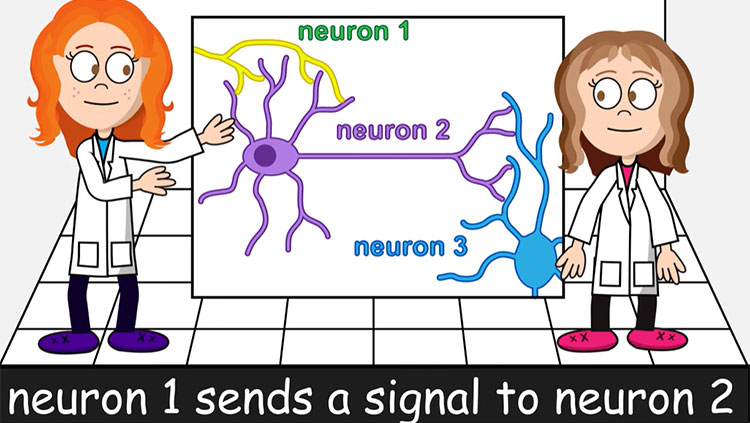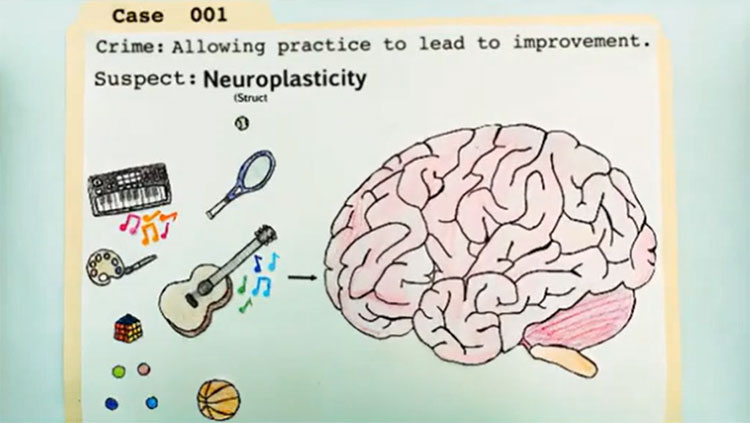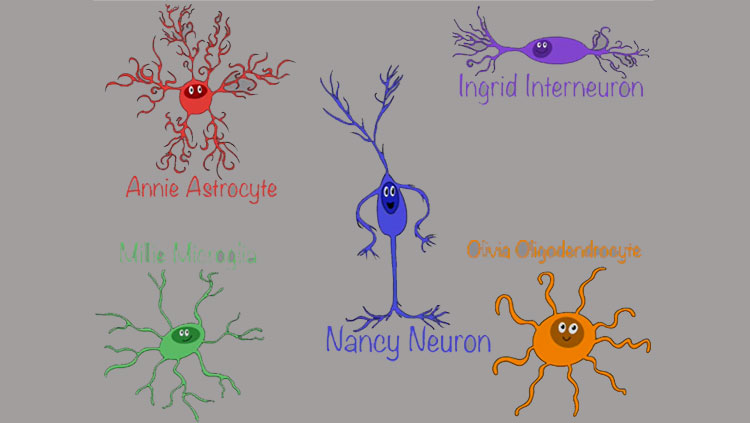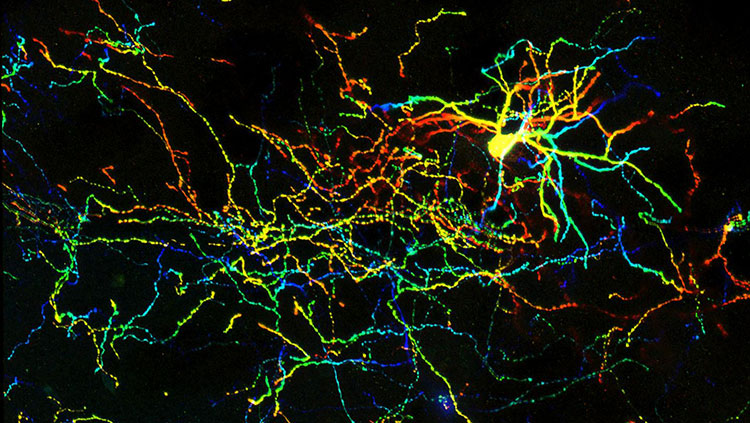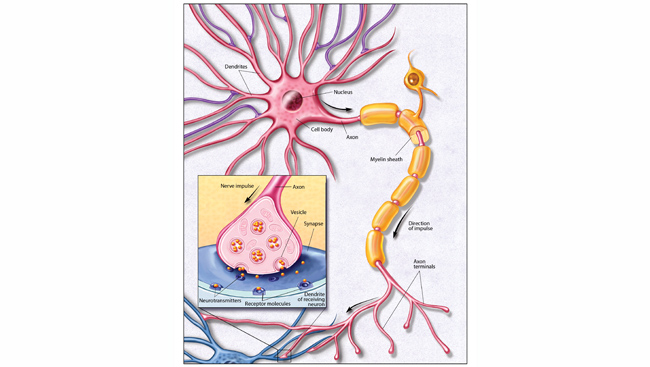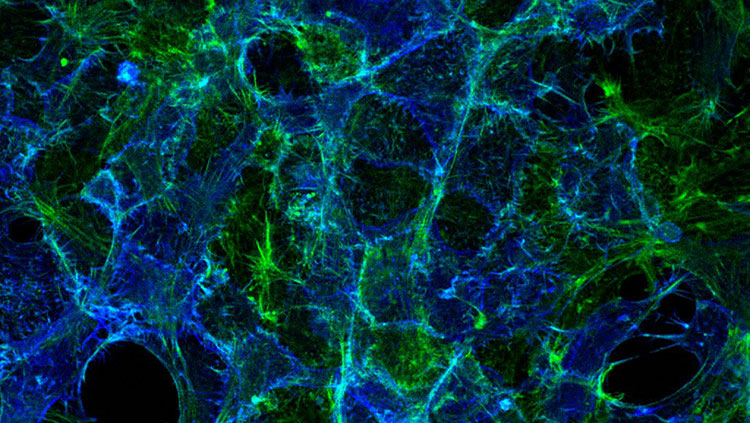One of the joys of growing up in the South is that time in the early summer near dusk when fireflies put on their enchanting display.
A Bug’s Light
The eerie flashing of fireflies is produced through bioluminescence, a chemical reaction that produces light, but no heat. On the rare occasion when (during a trip) one smashed against the windshield of our family car, I could see the bioluminous goo where the components of this reaction were still diffusely making light. And because the firefly was quite dead at that point, it was clear that whatever made the light didn’t require that the firefly turn it “on”, but that the reaction could proceed on it’s own. Yet there was something different about it -– the light was not as bright or coordinated, and it eventually faded.
Like other beetles, fireflies have brains and a nerve cord that extends the length of its body. To emit and coordinate flashes, a neural impulse is sent from the brain along neurons that use the chemical messenger octopamine at the terminals of this nerve cord. The terminals come into contact with cellular assemblies called rosettes. Rosettes are arrays of photocytes arranged around tiny tube-like structures called tracheoles that permit the flow of air into the interior of the beetle (since beetles don’t have lungs and don’t carry oxygen in their blood, they must respire their cells in this way). Lining the fluid-filled tracheoles are tracheolar cells, which receive the synaptic contacts from the nervous system. Photocytes are cells that contain the chemical ingredients for firefly flashes. Multiple photocytes are arrayed around a central tracheole – thus oxygen and the neural impulse come together in close approximation to the light emitting cells. But how does a neural impulse control the lantern, when it only seems to directly synapse onto the intervening tracheolar cell?
 When a firefly “decides” to flash, nerve fibers from the ganglia housed in and near the lantern activate, releasing octopamine onto the tracheolar cells. The activation elicits an increase in calcium in the tracheolar cell. This in turn stimulates the formation of the gaseous neurotransmitter nitric oxide (NO). The stimulated NO diffuses from the tracheolar cell into the photocyte.
Surely then, NO is THE chemical that controls the lantern? Yes, but the way it does so isn’t obvious.
When a firefly “decides” to flash, nerve fibers from the ganglia housed in and near the lantern activate, releasing octopamine onto the tracheolar cells. The activation elicits an increase in calcium in the tracheolar cell. This in turn stimulates the formation of the gaseous neurotransmitter nitric oxide (NO). The stimulated NO diffuses from the tracheolar cell into the photocyte.
Surely then, NO is THE chemical that controls the lantern? Yes, but the way it does so isn’t obvious.
Green Lantern
Bioluminescence depends upon a second biochemical reaction that occurs within the photocyte, in an organelle called a peroxisome. Another enzyme, luciferase (from the latin “lucifer”which means literally, “light bringer”) acts in the presence of another molecule, luciferin, ATP and hydrogen peroxide to produce the cold light we associate with the firefly flash. The peroxide is the key here, because to make it the cell must get oxygen from the tracheole tube into the peroxisome. Normally, oxygen is prevented from penetrating very far into the photocyte because of the metabolic activity of mitochondria, which vigorously scavenges the oxygen and blocks it from reaching the peroxisome. Like blockers for a running back, the NO is thought to block the action of the mitochondria, which allows the oxygen to penetrate the photocyte to the peroxisomes, where it quickly forms hydrogen peroxide. Flash!
 What you’re witnessing in a firefly flash is a rapid chemical reaction that is “fuel-injected” with oxygen (a gas) by the release of NO (another gas) under neural control. It’s a pretty amazing cascade, and it hints that there may be similar chemical sequences in the human brain that don’t involve bioluminescence.
What you’re witnessing in a firefly flash is a rapid chemical reaction that is “fuel-injected” with oxygen (a gas) by the release of NO (another gas) under neural control. It’s a pretty amazing cascade, and it hints that there may be similar chemical sequences in the human brain that don’t involve bioluminescence.
Sexy semaphore
As you might imagine, because the flashes of different species of firefly have different durations and patterns, the details of this sequence likely vary depending on the species. Different species of firefly that inhabit the same area often emerge at different times around sundown. Why do they do it? Different species of firefly flash for different reasons – but the most common is mate selection. Males emit characteristic flash patterns, and females respond with a delayed, different pattern. Maybe the idea that a firefly flash is a “live” chemical reaction designed to help in mate selection spoils a bit of the innocent mystery of it all. Certainly the wonder of it, and the wondering about it stimulated an abiding interest in science in me. But the surprising complexity should perhaps instead instill an even greater appreciation of the natural beauty of this vespertine creature, surviving at the leading edge of darkness.
[Note: Be a citizen scientist by observing fireflies in your area during the summer months when they are active. For more information go here.]
References
Read More:
Aprille J, Lagace CJ, Modica-Napolitano J, Trimmer BA (2004) “Role of Nitric Oxide and Mitochondria in Control of Firefly Flash” Integr Comp Biol (2004) 44 (3): 213-219.
Branham, M. A., and M. D. Greenfield. 1996. Flashing males win mate success. Nature , 381745-746.
Brown, G. C. 1999. Nitric oxide and mitochondrial respiration. Biochim. Biophys. Acta , 1411351-369.
Buck J, Case JF and Hanson Jr. EF (1963). Control of Flashing in Fireflies. III. Peripheral Excitation. Biological Bulletin 125:251-269.
Cronin TW, Järvilehto M, Weckström M, Lall AB. (2000). Tuning of photoreceptor spectral sensitivity in fireflies (Coleoptera: Lampyridae). J Comp Physiol A. 186:1-12.
Carlson, A. D. 1981. Neural control of the male Photuris versicolor firefly flash. J. Exp. Biol , 92165-172.
Carlson, A. D., J. Copeland, and R. Shaskan. 1982. Flash communication between the sexes of the firefly, Photuris lucicrescens. Physiol. Entomol , 7503-514.
Carlson, A. D., and M. Jalenak. 1986. Release of octopamine from the photomotor neurones of the larval firefly lanterns. J. Expt. Biol , 122453-457.



